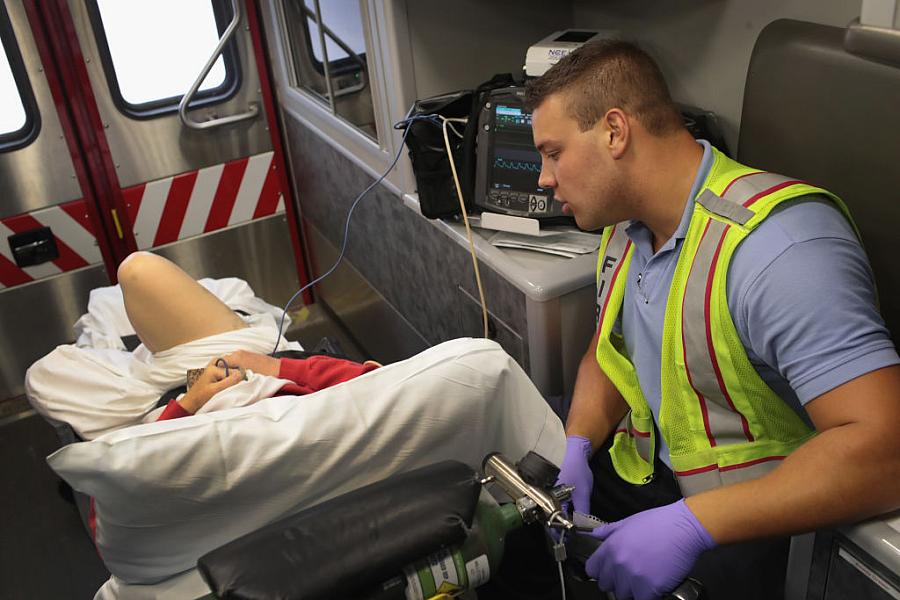Free Your Mind: Solving drug epidemic calls for crisis mentality

Now that the opioid crisis has been officially declared a national emergency, the real work begins.
That crisis is national in scope, as President Trump explained, following recommendations from a commission that reviewed years of reports and studies showing the widespread dependency on prescription painkillers, heroin and other opioids. Forthcoming efforts must be highly localized, because the particular character of opioid problems differs from community to community.
My research organization, the Institute for Health Metrics and Evaluation (IHME) at the University of Washington, has studied all the major causes of death and disability in the United States and analyzed them to be able to make apples to apples comparisons about the relative impact of each.
We found some things that run counter to some longstanding narratives about what makes Americans sick.
- The crisis has been worsening at a rapid clip. Twenty years ago, opioid use disorders were the 25th leading cause of disease burden for Americans of all ages. The rate of disease burden related to opioid use disorders has worsened 83% since that time, now putting opioid use disorders in the top 10.
- Opioids are now a much bigger problem than things Americans commonly think of as the biggest health threats, things we wear ribbons about and put bumper stickers on our cars about. Opioid use disorders now cause more damage than motor vehicle accidents, breast cancer, and violence from firearms.
- The crisis is hitting young adults especially hard. For adults 25 to 39, opioid use disorders are the leading cause of disease burden, a combination of illness and premature death. For 40 to 44 year olds, it ranks second. And for 20 to 24 year olds, it ranks third.
Perhaps most importantly, IHME found that when you examine the way the opioid crisis is playing out nationally, it can be highly local. It is at its most acute in communities in Appalachia, the Northeast, Oklahoma, Ohio, Indiana and the Southwest. The 10 counties with the highest death rates from opioid use disorders are in New Mexico, West Virginia and Kentucky. West Virginia saw opioid death rates rise rapidly between 1990 and 2014, but so did Indiana and Ohio.
Within a single state, the death rates can vary greatly. Take West Virginia, which in many ways can appear to be the epicenter of the crisis. Even in that state, there are counties where the death rates from opioids are below the national average, while other counties have people dying from opioid use at five times the U.S. average.
My boss, Dr. Christopher Murray, wrote an op-ed recently for The Hill urging decision-makers to treat the opioid problem as a public health crisis. Murray spends most of his time advancing the science of health metrics and has only written a handful of opinion pieces outside of scientific literature. The nature of the opioid epidemic is so extreme, though, that he felt compelled to bring some evidence to the policy discussion. He wrote:
Compared to its peers, America is an anomaly. In the U.S., people die from opioids at higher rates than in Western Europe, Canada, or Australia. The U.S. ranks fourth, behind Ukraine, Belarus and Russia. If it were a virus, the opioid epidemic would likely be dealt with very differently. Remember the Ebola virus? A single casualty on American soil caused fear nationwide, and each suspected or confirmed case was met with an immediate response from public health officials.
He also noted that a big part of the problem with the public response to the opioid crisis is the way we categorize people who habitually use heroin, painkillers and other drugs. He wrote:
For too long, opioid users have been seen as people who make bad choices instead of individuals who need medical care to treat their addiction and measures to prevent them from becoming addicted in the first place. Government agencies at the local, state and federal levels must take action – urgent action – to help combat the threat opioids pose to American lives.
I wrote this while listening to Funkadelic’s “Maggot Brain,” one of the greatest rock albums of all time and also the product of a bunch of guys under the influence of all variety of substances. Another one of Funkadelic’s albums “Free Your Mind…” was what bandleader George Clinton described as an attempt to “see if we can cut a whole album while we're all tripping on acid.” Artistic odes to alcohol and drugs are centuries old. It’s that cultural tension between the pleasure of partaking in something – directly or through art – and the real world consequences of drug or alcohol dependency that is one of the key distinctions between the opioid crisis and Ebola or other diseases. Nobody is writing songs about how cool it is to have your body destroyed from the inside out by a rapidly moving virus. It’s also what makes the way we talk and write about the crisis even more crucial.
I will write about the language surrounding drug use in my next post.
[Photo by Scott Olson / Getty Images.]

